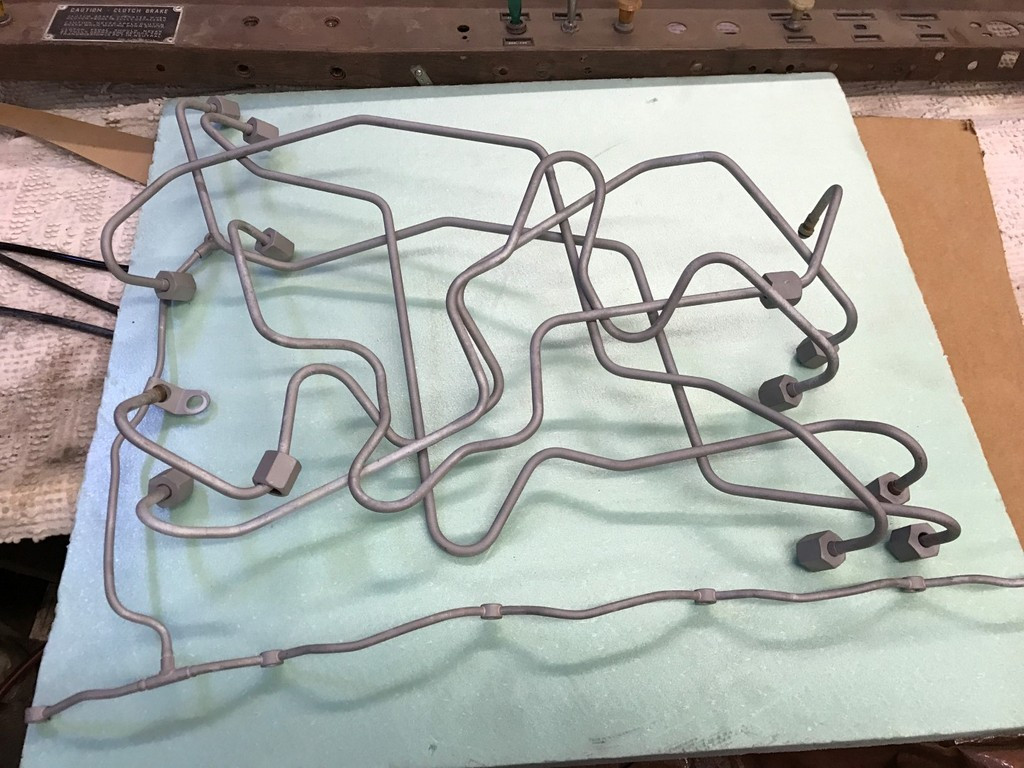I’m sure most folks here are not familiar with Brockway trucks, but they were manufactured in Cortland NY from 1912 to 1977. They were bought by Mack in the mid 50’s and were an ‘autonomous’ company until the day they closed in 1977. They have a very loyal following and there is an annual truck show dedicated to Brockway’s the second Saturday of every August.
My Dad drive truck for a living and always had an interest in Brockways. I bought my 1955 155W in 2000 and spent 8 years restoring it. In 2008 we drove the truck for the first time from near Scranton PA to Cortland NY for the annual show. I So far I have put a little over 7300 miles on it. Even with having 2 other Brockways, a 361 and 761, I really enjoy driving this truck. So I decided it was time to make a few changes...
This forum has been very helpful with some issues I ran across with my Cummins 6BT so I figured I would share my build thread here. This starts in the fall of 2015...
![Image]()
The 42BD or 427 flathead Continental has been a great motor but really doesn’t have the power you need for today’s roads. It will run 55mph all day long on level road but once you hit any kind of grade your down to 40 in the right hand lane with the 4 ways on. I would like to be able to run 60 mph up a hill so I decided it would be a good time to upgrade the Continental. I did consider making some upgrades to the 427, like adding dual carbs with the Ellis manifold, maybe an MSD ignition, a Mallory distributor, etc., but most of these upgrades would have little gains verses the costs. It’s also start to leak some oil so that was another deciding factor...
So after much thought I decided to replace the Continental with a 5.9 Cummins. They are comparable in size as well as weight. I did consider the 8.3 Cummins but that weighs in at 1800lbs which is about a 1000lbs heavier than the Continental. You can also build decent power fairly economically with these motors. I also knew that these were used in some smaller Freightliners with air brakes so that was a plus since (air compressor, etc...)
More to follow...
My Dad drive truck for a living and always had an interest in Brockways. I bought my 1955 155W in 2000 and spent 8 years restoring it. In 2008 we drove the truck for the first time from near Scranton PA to Cortland NY for the annual show. I So far I have put a little over 7300 miles on it. Even with having 2 other Brockways, a 361 and 761, I really enjoy driving this truck. So I decided it was time to make a few changes...
This forum has been very helpful with some issues I ran across with my Cummins 6BT so I figured I would share my build thread here. This starts in the fall of 2015...

The 42BD or 427 flathead Continental has been a great motor but really doesn’t have the power you need for today’s roads. It will run 55mph all day long on level road but once you hit any kind of grade your down to 40 in the right hand lane with the 4 ways on. I would like to be able to run 60 mph up a hill so I decided it would be a good time to upgrade the Continental. I did consider making some upgrades to the 427, like adding dual carbs with the Ellis manifold, maybe an MSD ignition, a Mallory distributor, etc., but most of these upgrades would have little gains verses the costs. It’s also start to leak some oil so that was another deciding factor...
So after much thought I decided to replace the Continental with a 5.9 Cummins. They are comparable in size as well as weight. I did consider the 8.3 Cummins but that weighs in at 1800lbs which is about a 1000lbs heavier than the Continental. You can also build decent power fairly economically with these motors. I also knew that these were used in some smaller Freightliners with air brakes so that was a plus since (air compressor, etc...)
More to follow...




































































































































